In our Silicom PE310G2I50-T Intel X550 10Gbase-T NIC review, we are going to take a look at a card that we purchased without knowing exactly what it was. The card is a dual-port 10GbE card and that is exactly what we were looking for. Instead of purchasing an Intel branded card, we purchased these. In our review, we are simply going to show-off the card and give a quick check on performance.
Silicom PE310G2I50-T Hardware Overview
The PE310G2I50-T is a low-profile card and comes in a fairly standard form factor. We can see the Intel X550 chipset heatsink that is held in place by metal pins and springs. These metal pins may not seem like a big feature, but STH had a 10Gbase-T card burn up as the Most Spectacular Hardware Failure in the STH/ Lab in 2016 because a plastic pin failed.
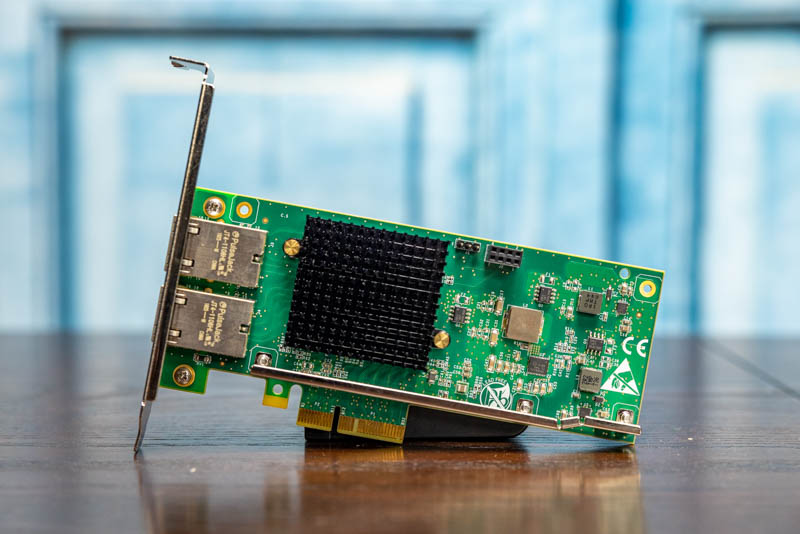
While many vendors simply purchase Intel X550-T2 cards and re-brand them, we wanted to note that Silicom is actually doing engineering on these cards. Above one can see the Silicom card with a heatsink that provides a lot of surface area. One can also see the metal shield/ brace that runs along the bottom edge of the card. The only image of the Intel X550-T2 I could find in the STH CMS was a stock photo, but here is what that card looks like that makes it clear Silicom is doing design work not just re-labeling an Intel card.
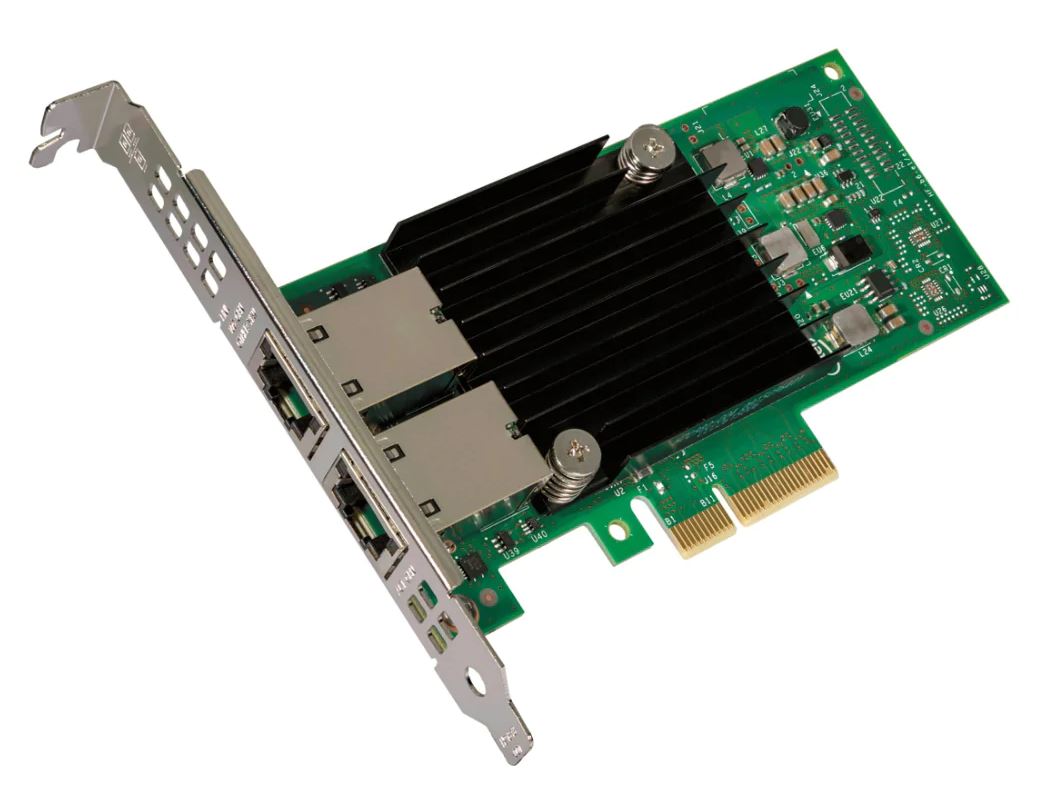
Silicom, if you are not aware, makes specialty cards for companies such as Dell and other OEMs and has been around for years. If you read STH, you may have a network card made by Silicom and not know it.
One may also notice quickly that the heatsinks on these cards are much smaller than on the X540 generations of cards. The X550 is Intel’s newer generation that is much better on power/ thermals while adding new features. To give some sense, the X540 version of this card is rated at 14.28W with both ports operating at 10Gbase-T speeds. This card is rated at 8.16W. That is around a 43% decrease in power which is a massive generational improvement.
We get two ports since this is a dual 10Gbase-T card.
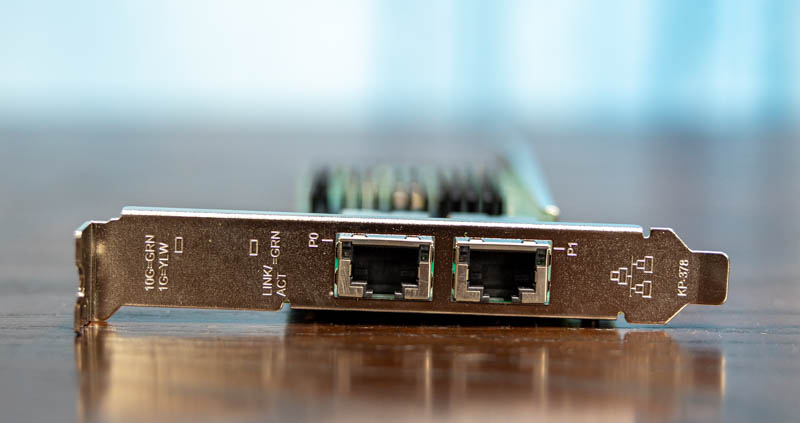
The back of the card has large stickers and not much else. We will just quickly note here that the stickers have a small but welcome feature, they feature large barcodes. That may seem trivial, but it just makes them faster/ easier to scan for data center technicians. Even the text seems like it is sized for more mature eyes than some of the micro text and barcodes we have seen on NICs.
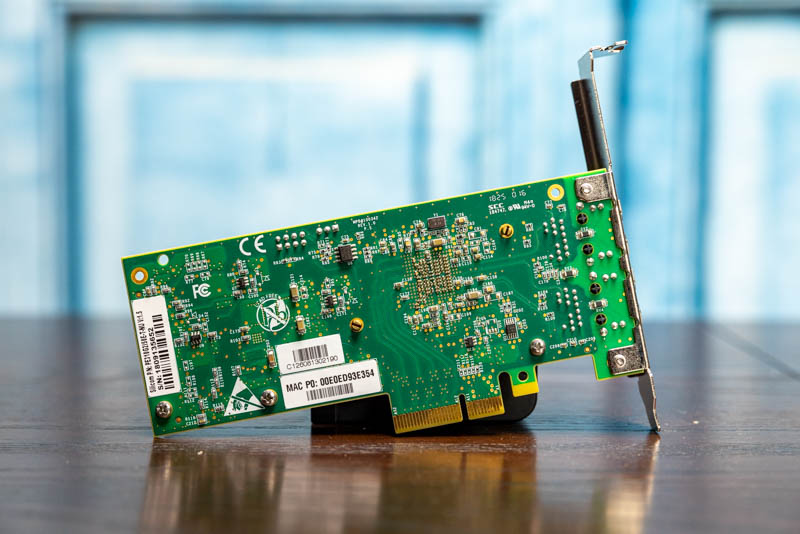
With this generation, we also get a PCIe Gen3 x4 slot. The Intel X540 was a PCIe Gen2 card so that is another subtle generational difference. We should probably do a full guide of the X540 to X550 differences. There is a lot that was updated such as moving from 32 to 128 transmit queues, VMDq Virtual Device Queues per port moved from 16 to 64, and also 2.5/5GbE support. Perhaps that should be its own reference piece.
We have full-height brackets installed for these photos, but the card can use either full-height or low-profile brackets.
Next, let us take a look at the performance before getting to our final words.
Silicom PE310G2I50-T Performance
Overall, we have a good sense of how this card will perform. It has a well-known controller onboard.

We verified that we were seeing 10GbE speeds on the card.
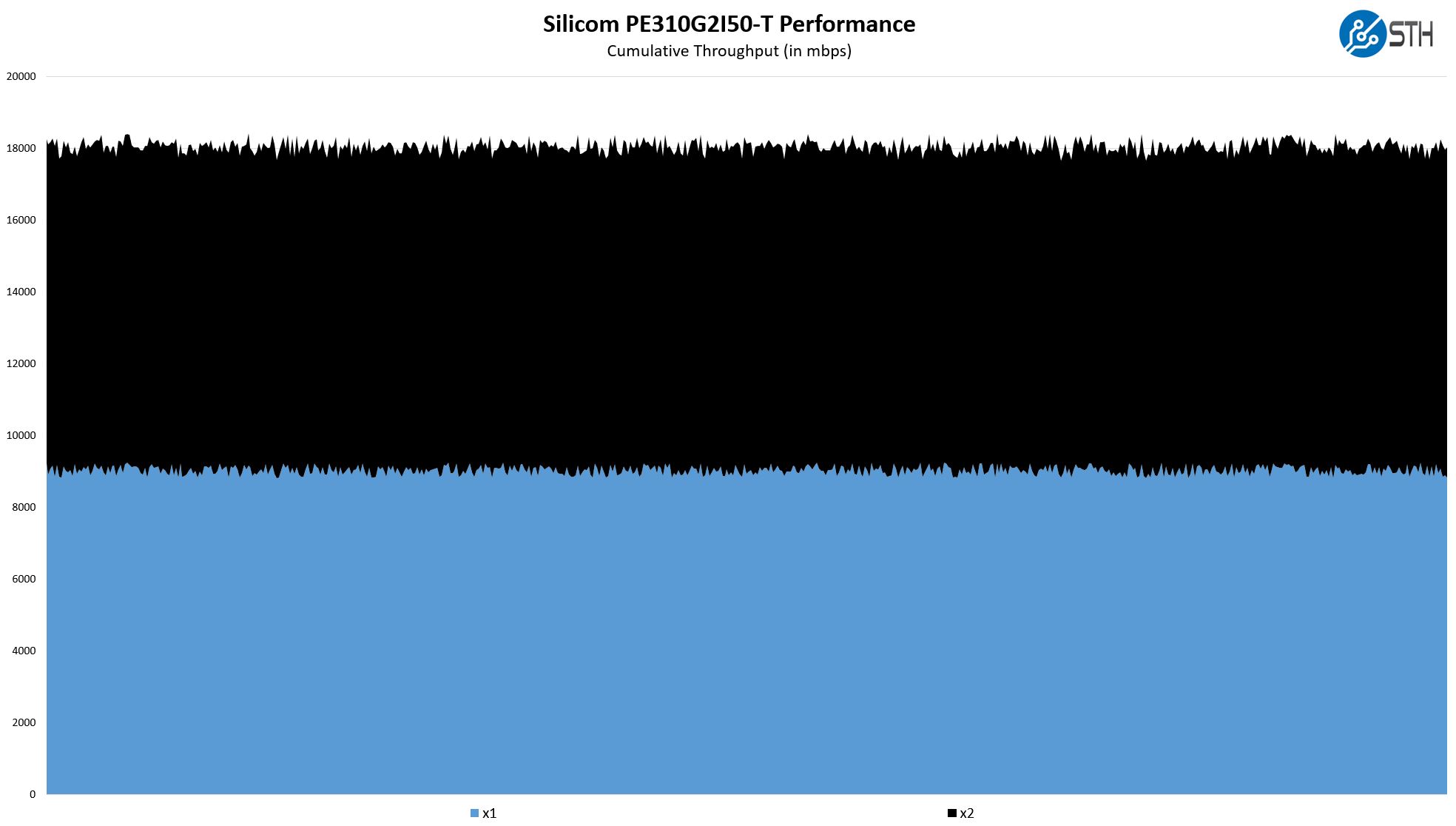
There is not much to say here. The card performs as we would expect from a modern dual 10Gbase-T solution.
Final Words
Overall, the Silicom PE310G2I50-T is a solid card. It has dual 10Gbase-T ports and runs at considerably lower power than its predecessors.
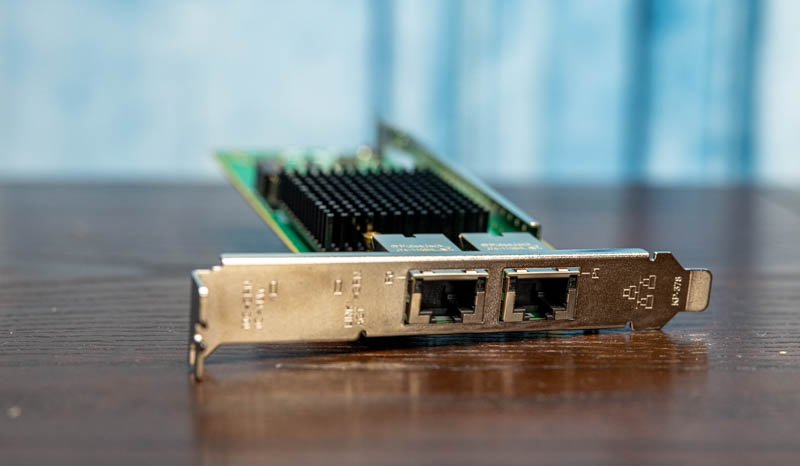
We recently reviewed the Intel X710-T4 quad-port 10Gbase-T NIC but there are certainly trade-offs with moving up to a quad-port card. The dual-port X550 solution uses less power and is less expensive which will often make it a better choice.
Overall, this is one of our shortest reviews in recent memory. This card simply worked out-of-box as it is based on a well-supported chipset.

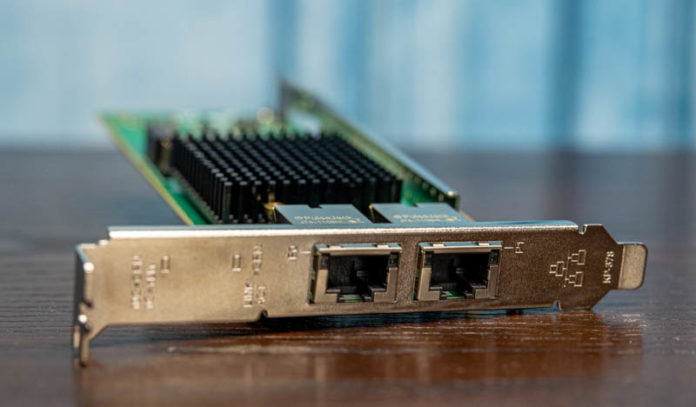



Why are you reviewing cards based on ancient ASICs? What about reviews of up to date adapters?
The Intel X550 is still the top-end current generation ixgb NIC from Intel. The X710-TL is newer but is on a PCIe Gen3 x8 not x4 slot and uses the 40Gb 700 series drivers. Since many current-gen systems still can be configured with the X550 we always like to get these types of reviews out.
9, 9, then we get 9.0. can we standardize on review’s having decimals?
Nice review Rohit.
Silicom really does some top-notch designs imo – their attention to detail is honestly some of the best I’ve seen. Their older x540 based boards were some of the only OEM x540s I’d seen with full length heatsinks, and because of that, always run significantly (usually 4-6°) cooler than other boards using the same chipset, even side by side within the same server.
And the larger stickers/writing? Folks might laugh if someone called that out as a “feature/benefit” of silicom’s hw… but those people have likely never been in a situation where they had to install 50+ of them at once. Theres something to be said for simple quality of life things like this.
Some quick feedback – In the future, itd be good if we could get some more thermal analysis in reviews like these. The only real benefits to be had on one nic vs another when utilizing the exact same chipset are thermals and (potentially) some other special sauce they mightve thrown in to add value (whether that be firmware related, hw integrations with other products, or whatever the case may be). Without that data, the only basis for choosing one x550 over another is price alone.
For a homelabber, these reviews on slightly older tech are still very valuable.
Thanks for effort STH!
When will we get a sub $500 10GB switch without fans and not built for a rack?
Can a regular consumer purchase one of these NIC’s? If so, how? Or they only sold to system manufacturers?
Thanks
MikroTik CRS305-1G-4S+IN ?
4x SPF+ + 1 normal port – afaik he can even be powered by PoE.
sells for arround 130€ here in germany incl. taxes.
otherwise there is one from tp link 16x poe and 4x spf+ ~300-400 bucks as faar as i remember – but not fanless as faar as i know.
@Peter B. The CRS305 is a pretty amazing little box but for (existing?) copper cables you still need sth like the “Mikrotik S+RJ10” SFP+ modules at ~65€ per port.
At least it is small enough for standard 802.3af/at PoE input, instead of passive PoE.
For the homelab I’m waiting for sth like the CRS326 but with 2.5Gbe instead of gigabit at a reasonable price. Consumer motherboards and Wifi6(E) routers are finally adopting 2.5Gbe.
@Tanquen, On a switch, I’m keeping eye on TP-Link TL-SX1008 8 port . Not fanless, but “Smart fan speed adjustment ensures minimal noise to be non-distracting when use.” I’ve only seen listed for sale as out of stock, but for what is equivalently under $500.
@Steve W, likewise, I keep looking for a consumer USA source of this NIC .
Where is a good place to find these cards second-hand? I’ve building out a new home router and need 1 card that can do 2.5gbe on one port and 10gbps on the other. The eBay x550 unfortunately was a dud, so need a new card ASAP!!!
Chiming in again here, Can you please verify that these cards do indeed support 2.5Gbe and 5Gbe? Intel’s spec sheet indicates yes, while Silicom’s spec sheet only indicates NBase-T support on the higher end X710 based offering? Would be great to see that as a follow-up article?